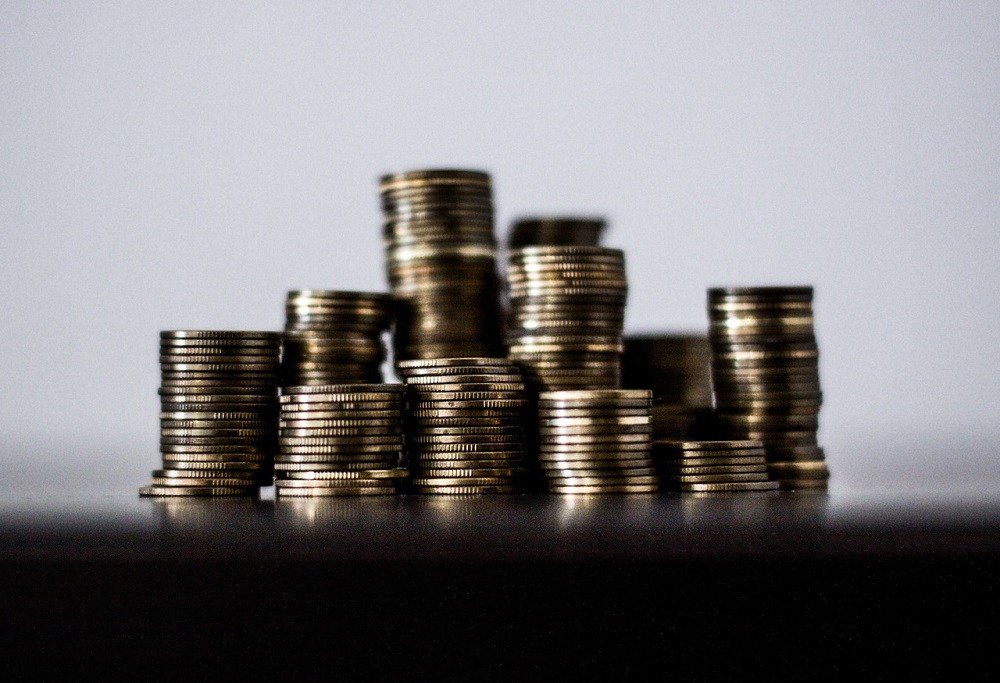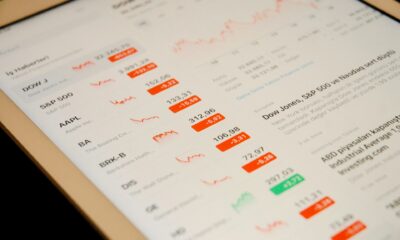Markets
US national debt and record high stock market prices – what’s going to happen?
There isn’t much the government can do to encourage another round of debt accumulation to pull the economy out of a death spiral.

The Wall Street is becoming more satisfied with the growing difference between the strength of the U.S. economy and equity prices. This is proven from the major averages which continue to set record highs.
When investors view the Total market cap to GDP ratio, it becomes strikingly clear that economic growth has not at all kept pace with booming stock values in the past few years.
In fact, this key metric, which oscillated between 50-60% from the mid-seventies to mid-nineties, now stands at an incredible 130%
The reason for this huge discrepancy is clear: massive money printing by the Fed has led to rising asset prices but at the same time has failed to boost productivity. In fact, since Quantitative Easing (QE) began back in November of 2008, the Fed’s balance sheet has grown from $700 billion to $4.5 trillion today. That is an increase of 540%! Yet, during the same time period, U.S. GDP has only managed to increase from $14.5 trillion to $18.8 trillion; for a comparative measly blip in a growth of just 29%.
And this anemic state of GDP growth shows no signs of picking up steam, despite the hype and hope from Wall Street regarding the new President. After growing at just about 2% per year since coming out of the Great Recession, the Atlanta Fed’s GDP Now forecast model has Q1 GDP growth coming in at a below-trend rate of just 1.2%.
But what’s even worse is the denominator in that market cap to GDP equation has been artificially supported by that same central bank QE and artificially-low interest rates. This distorted type of Fed-engendered economic growth comes from encouraging the accumulation of more debt through the process of making loans dirt cheap. Indeed, the housing bubble economy of a decade ago was abetted by taking the Fed Funds Rate (FFR) to one percent from June 2003-June 2004. Likewise, today’s housing, equity and bond bubbles found their birth from a zero percent Fed Funds rate that was extent from December 2008-December 2015—and still, stands below 1% today.
So what we have is an extremely dangerous situation indeed. While record high stock prices have become more detached from economic reality than ever before, the Fed has encouraged debt levels to surge to a record as well. And because robust growth has been absent, the level of the U.S. 10-year Note can’t seem to get above 2.6%.
According to the Federal Reserve’s Flow of Funds Report, the level of Total Non-financial Debt has soared from $35 trillion back in 2008, to over $47 trillion in Q3 2016. As mentioned, this growth has been boosted from new debt issuance, and that debt compulsion is the result of QE and a zero interest rate policy (ZIRP). But now ZIRP is in the process of going away.
The last time the Fed began a rate hiking cycle was back in June of 2004. At that time the Funds Rate was 1% and the 10 Year Note was 4.75%, with a spread of 375 basis points. However, that spread between the (FFR) and the 10 year now stands at just 175 bps.
Therefore, unless President Trump can pass his aggressive fiscal stimulus plan imminently, it is likely that the yield curve will flatten out much quicker than at any other time in history due to that currently tight spread. As the Fed continues to slowly raise rates, expect long-term rates to fall due to deflating stock and home prices, and a weakening economy.
The truth is it will probably only take a handful of rate hikes to cause the yield curve to resemble a very flat pancake. Why is that important? A flat or inverted yield curve has most often led to a recession and carnage in the stock market; just as it did prior to the huge collapse in equities during 2000 and 2008. In fact, the Fed has a long history of cycling between lowering rates too much, causing a steepening yield curve, then raising rates too quickly and flattening it out.
Only this go around when short-term rates rise to meet long-term borrowing costs the ensuing recession will occur with record-low interest rates, unrivaled debt levels, unparalleled real estate prices and unprecedented stock prices.
Bond yields are, historically speaking, “in the basement” and the public and private sectors are already saturated in debt. Therefore, there just isn’t much the government can do to encourage another round of debt accumulation to pull the economy out of a death spiral, as it did in the wake of the Great Recession.
Ms. Yellen is convinced she can normalize interest rates with impunity during this current hiking cycle. If the Fed follows through on its convictions, look for a flat yield curve and a recession to wipe out 50% of equity prices for the third time in the past seventeen years.
—
DISCLAIMER: This article expresses my own ideas and opinions. Any information I have shared are from sources that I believe to be reliable and accurate. I did not receive any financial compensation in writing this post, nor do I own any shares in any company I’ve mentioned. I encourage any reader to do their own diligent research first before making any investment decisions.

-

 Africa2 weeks ago
Africa2 weeks agoAgadir Welcomes Nearly 570,000 Tourists by May 2025
-

 Impact Investing2 days ago
Impact Investing2 days agoEuropeans Urge Strong Climate Action Amid Rising Awareness and Support
-

 Cannabis1 week ago
Cannabis1 week agoRecord-Breaking Mary Jane Fair in Berlin Highlights Cannabis Boom Amid Political Uncertainty
-

 Biotech7 days ago
Biotech7 days agoVytrus Biotech Marks Historic 2024 with Sustainability Milestones and 35% Revenue Growth


























You must be logged in to post a comment Login